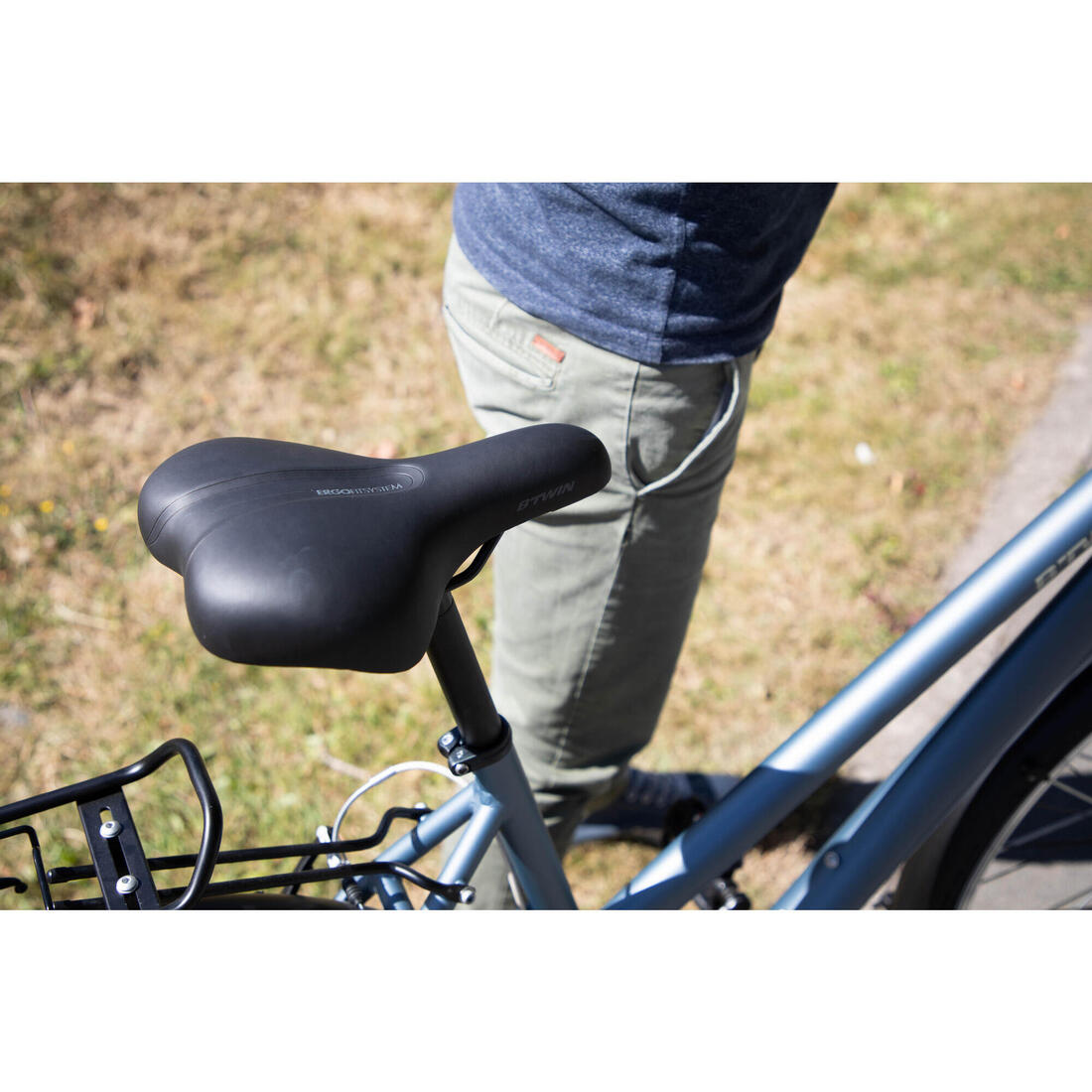We've designed this saddle for occasional bike rides of up to 1 hour at low intensity and a back angle of 90°.
Features:
260 mm x 195 mm
Compatibility:
Compatible with all brands of seat post with 7 mm rails.
How to choose your saddle according to your riding style
Choosing the right saddle all depends on your position on the bike.For a straight back position (90°), opt for a very wide saddle, often with gel, ideal for outings.If you are slightly bent over (60°), an intermediate saddle will be a good compromise between comfort and performance.Finally, for a sporty position (30°), a thin saddle with a narrow nose is the solution to reduce pressure and improve your performance.
TO MAKE THE MOST OF YOUR BIKE RIDE:
For maximum comfort, adjust your saddle at four key points.Choose a model suited to your posture (for example, a 60° back angle).Adjust the height to suit your body type, then adjust the angle to avoid discomfort.Finally, adjust its setback for good alignment. For complete comfort, don't forget to wear cycling attire suited to the length of your rides.
1. Determining the saddle height (part 1):
Step 1: Get a hardback book and a pencil.
Step 2: Stand barefoot with your heels against a wall and your feet apart (15-20 cm).
Step 3: Slide the book between your legs to your perineum.
Step 4: Mark the top of the book on the wall.
Step 5: Measure from the floor to the mark.
This height corresponds to your inseam, which is essential for choosing the right size bike.
1. Determining the saddle height (part 2):
Adjusting your saddle correctly is easy!
- Inseam measurement (in cm) × 0.883 = height to be adjusted.
- For example:89 cm × 0.883 = 78.6 cm.
This distance is measured between the bottom bracket and the top of the saddle.
2. Adjusting the saddle angle:
Before setting off, check the angle of your saddle.
Use a spirit level on the front part.
Ensure that the saddle is completely horizontal.
Then test and adjust it for smooth, comfortable pedalling.
3. How to measure your sit-bone width
Choosing the right saddle starts with a simple measurement:
- Take two pieces of corrugated cardboard and place them on a stool.
- Sit on them, straight up, and press down hard for one minute.
- Stand up:two imprints should appear.
- Connect the centres of the imprints with a ruler.
This number is the distance between your sit bones, which is essential for finding the right saddle.
3. Adjusting the saddle setback:
A good saddle position = no knee pain
Sit on the bike and lean back to stay upright.
Fix your feet in place and set the crank to horizontal.
Check the knee-pedal alignment → adjust the saddle if necessary.
Perfect for daily travel with a wide cut suited to all body shapes.
We've designed this saddle for occasional bike rides of up to 1 hour at low intensity and a back angle of 90°.







